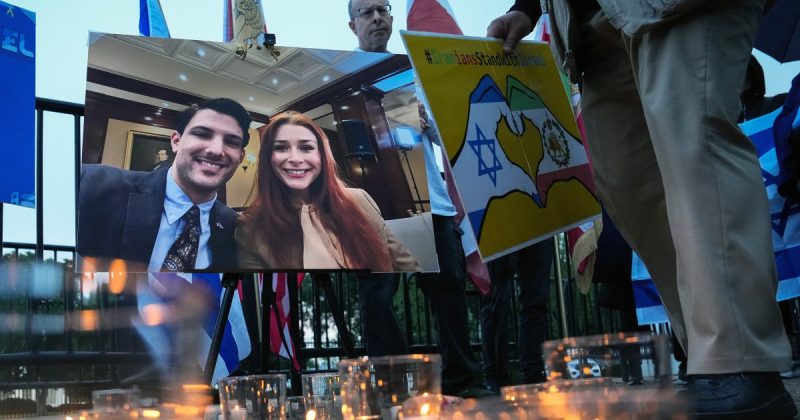
The recent brutal murder of two Israeli embassy staffers outside the Capital Jewish Museum in Washington D.C. has once again highlighted the chilling reality of lone wolf attacks. The attacker, Elias Rodriguez, 31, shot the couple point-blank, then shouted “Free Palestine” before surrendering. This act of violence, fueled by extremist ideology, raises a critical question: how can we effectively prevent such attacks when the perpetrators often operate outside the traditional surveillance net?
Experts like Gregg McCrary, a former FBI profiler, emphasize the near impossibility of identifying these individuals. He describes the challenge not as finding a needle in a haystack, but as trying to predict which piece of hay will suddenly become a needle. This underscores the inherent difficulty in preemptively identifying individuals who may transition from harboring extremist views to committing acts of violence.
The incident comes amidst a concerning rise in politically motivated lone wolf attacks across the U.S. While right-wing extremism has historically been the dominant driver of domestic terrorism, recent high-profile incidents stemming from left-wing ideologies demonstrate the increasingly volatile political landscape. Jon Lewis, a research fellow at the Program on Extremism at George Washington University, notes a disturbing trend: an increased acceptance of violence against perceived enemies, a sentiment that transcends political divides.
The suspect, Elias Rodriguez, has been charged with first-degree murder. His actions, coupled with the lack of prior criminal record or surveillance, further illustrate the challenges faced by law enforcement. Forensic psychiatrist Dr. Park Dietz points to the toxic combination of bitter political polarization and the anonymity offered by the dark corners of the internet as key factors driving this type of violence. He highlights the animating issues on both the left (Israel’s actions in Gaza, immigration policies) and the right (pro-Palestinian protests, perceived “woke” ideology) as contributing to this volatile environment.
Law enforcement officials express frustration over the difficulty in preventing attacks by individuals who are not on their radar. Concerns have been raised about changes within the FBI and Justice Department under the Trump administration, with sources describing a significant reduction in resources dedicated to domestic terrorism investigations. These shifts have led to widespread concern amongst current and former officials about a decline in national security.
The consequences of this under-resourcing are tragically illustrated by past events, including the Charleston church shooting, the Charlottesville car attack, the Pittsburgh synagogue massacre, and the assault on the U.S. Capitol. The Anti-Defamation League notes that right-wing ideologies have fueled the majority of extremist attacks in recent decades. However, the recent surge in left-wing fueled violence, such as the attempted assassination of Donald Trump and the murder of UnitedHealthcare CEO Brian Thompson, cannot be ignored.
The amplification of hate speech through podcasts and social media further exacerbates the problem. Experts like Oren Segal of the Anti-Defamation League highlight the role of demonization and glorification of violence in creating an environment conducive to such attacks. The pursuit of infamy, the desire for attention through a violent act, serves as another powerful motivator for radicalized individuals.
Ultimately, preventing lone wolf attacks requires a multifaceted approach. Increased resources and a renewed focus on domestic terrorism, coupled with efforts to counter online radicalization and address the root causes of political polarization, are crucial steps in mitigating this serious threat to national security.









